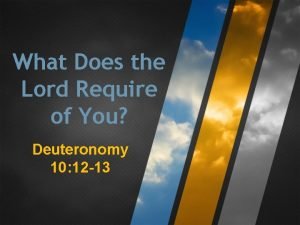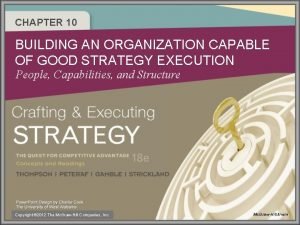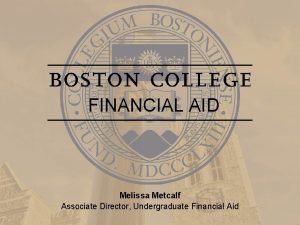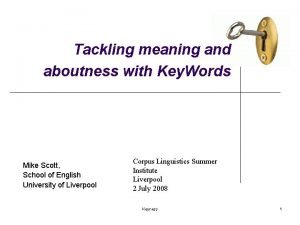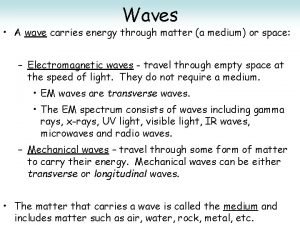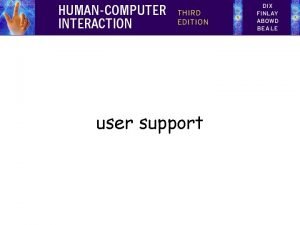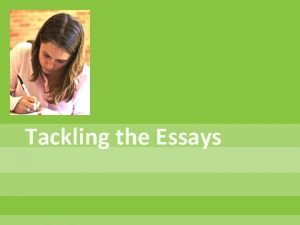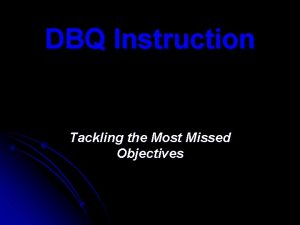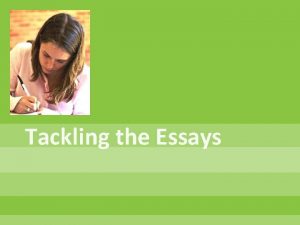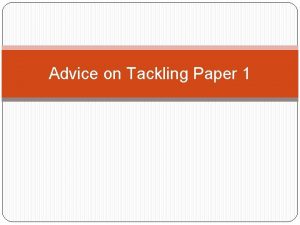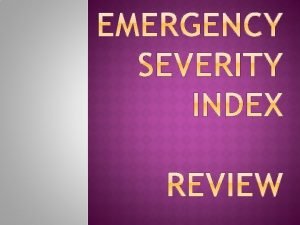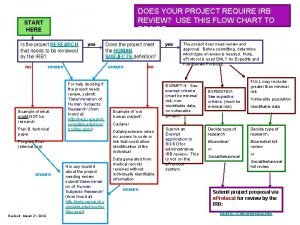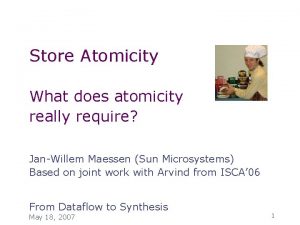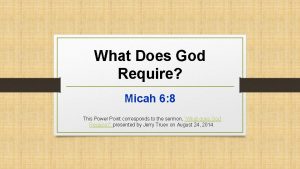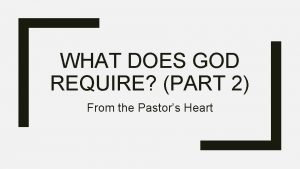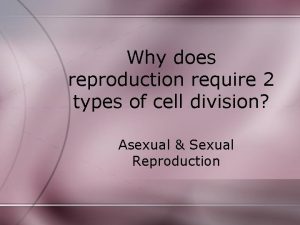Tackling Paper 2 What Does Paper 2 Require
















![Source 2: Frederic Remington, “The Ghost Dance by the Ogallala [sic] Sioux at Pine Source 2: Frederic Remington, “The Ghost Dance by the Ogallala [sic] Sioux at Pine](https://slidetodoc.com/presentation_image_h2/746fe444aa16a8ade9da6dca01b47e7c/image-17.jpg)


- Slides: 19

Tackling Paper 2

What Does Paper 2 Require? Paper 2 requires students to use and evaluate a set of primary sources related to one historical topic. In order to reach the top levels of the mark scheme, students must always use content, knowledge, and evaluation in their responses. Content is the information you find in the source(s). Knowledge is the context for the source(s) – background information from the Specified Content. Evaluation is considering the provenance of a source to determine how best to use it to answer the question.

What Did the Examiner’s Report Say About Student Performance in 2014? “The basis of all answers is the content. Candidates should make full use of the sources … Knowledge and evaluation should be applied but if this is not linked to the internal content of the source(s) then Level 2 is the ceiling … Candidates need to adopt a skeptical stance about source material … they need to ask sufficient questions about its quality as evidence. Candidates need to be prepared to test the evidence and have confidence in their own judgments. ”

Answering Paper 2 Questions

Respond to the question “What can this source tell you about …” “How useful is this source as evidence for …” “How far does this source reflect …” “Why do these sources differ …” WITH CONTENT: what do you learn from the source? Make sure you include evidence! Have you considered: - The main message of the source - Details to support the message - Tone KNOWLEDGE: what do you know about the context? EVALUATION: what does the provenance of the source tell you about the message? Make sure you include evidence! Have you considered: - What you know about the broader historical context - What you know about the things mentioned in the source - Have you considered: The author’s identity The intended audience The author’s motives How we can use this source to understand the past

Respond to the question L 1 L 2 CONTENT: what do you learn from the source? Make sure you include evidence! Have you considered: - The main message of the source - Details to support the message - Tone “What can this source tell you about …” “How useful is this source as evidence for …” “How far does this source reflect …” “Why do these sources differ …” WITH L 3 L 4+ KNOWLEDGE: what do you know about the context? EVALUATION: what does the provenance of the source tell you about the message? Make sure you include evidence! Have you considered: - What you know about the broader historical context - What you know about the things mentioned in the source - Have you considered: The author’s identity The intended audience The author’s motives How we can use this source to understand the past

Source B As soon as they arrive our problems begin – communism, anarchy, corruption, kidnapping, challenging the authority and integrity of our flag. Thousands come here who never take the oath to support our constitution and to become citizens of the United States. They pay allegiance to some other country while they live upon our own. They fill places that belong to the loyal wage-earning citizens of America. They are of no service whatever to our people. They are a constant menace and danger. - From a speech by Senator James Thomas Heflin of Alabama, 1921. The Senate was debating whether immigration should be limited. Question: Were the views expressed in this speech typical of attitudes in the 1920 s towards immigrants to the USA? Explain your answer using details from the source and your knowledge.

Respond to the question: Were the views expressed in this speech typical of attitudes in the 1920 s towards immigrants to the USA? Explain your answer using details from the source and your knowledge. L 1 This source embodies attitudes that were typical of many Americans in the 1920 s toward immigration. L 2 CONTENT: what do you learn from the source? ”Native” Americans began to complain about the overabundance of immigration, and how (according to Source B) “as soon as they arrive our problems began. ” Source B claims that “[immigrants] fill places that belong to loyal wage-earning citizens of America, ” which is implying that these immigrants, who were willing to work for cheaper, were taking the jobs that other Americans needed. Another cause for concern was the rising threat of communism, which put America in a “constant menace and danger. ” WITH KNOWLEDGE: what do you know about the context? People from all over the world were moving to the United States in search of a better life, because the US in the 1920 s looked a like bright beacon of hope to the poor people of other countries, especially in Europe and Asia. The US was being increasingly plagued by internal issues, such as corruption and post-war unemployment as the 1920 s progressed, and Congress would go on to pass a series of anti-immigration acts throughout the 1920 s to tackle these problems. Immigrants became scapegoats for many of America’s problems. L 3 L 4+ EVALUATION: what does the provenance of the source tell you about the message? The person delivering this speech was a politician who clearly had an interest in convincing other politicians to his way of thinking, and was likely representing the views of his constituents, who may not hold the same views as the entire country. The fact that this issue was being debated in the Senate suggests that not everyone held those views, and other Senators likely were representing pro-immigration interests based on their own constituents. However, given the passage of the antiimmigration laws and the nativist sentiment in the 1920 s, the views expressed in the source can be considered fairly typical.

Considering the “Usefulness” of a Source

Ways to Approach Thinking About a Source: Author • When I look at who wrote this source, it makes me think …, because … • After reading this source, I can infer … about the person who wrote it, because … • I know … about the author of this source [based on the source note/outside knowledge]. This makes me think … about the source.

Ways to Approach Thinking About a Source: Audience • The person who wrote this source was … and it was published in … From this, I can guess that the audience may have been …, because … • The message of the source is … The author uses [language/evidence] to support this message. This makes me think that the audience was …

Ways to Approach Thinking About A Source: Message & Motivation • The message of this source is … The author uses … language and … evidence to prove his/her point. This makes me think that the purpose of this source was to …. • I can infer, based on who the author was and where the source was published, that the purpose of this source was to …

Ways to Approach Thinking About a Source: Context • The view in this source is … This would have been a [typical/atypical] view for this time and location, because …. This would have been a [typical/atypical] view for the type of person the author was, because. . . This makes me think that … • What I know about what was going on at the time makes me think …. about this source, because …. • This source helps me understand what was going on at the time because … I can relate it to other things I know about the time in these ways: …

Translating Author, Audience, Message, Motivation, and Context into “Usefulness” • Move away from the idea of assessing a source solely on reliability/bias, or ranking how “good” or “bad” a source is based on perceived neutrality – neutrality is not the goal • Every source is equally useful, but they cannot always be used in equal ways to understand an event • Combine information from considering the components of the source to determine what the source is “telling us” versus what the source “says. ”

Considering These Elements in Sources

Source 1: Editorial, Rocky Mountain News, 1864 This editorial was published in the Rocky Mountain News following the Sand Creek Massacre “Among the brilliant feats of arms in Indian warfare, the recent campaign of our Colorado volunteers will stand in history with few rivals, and none to exceed it in final results … we have gathered from those who participated in it and from others who were in that part of the country, some facts which will doubtless interest many of our readers … “[The Native American] village consisted of one hundred and thirty Cheyenne and with Arapahoe lodges. These … were totally destroy. Among their effects were large supplies of flour, sugar, coffee, tea … Women’s and children’s clothing were found; also books and many other articles which must have been taken from captured trains or houses. One white man’s scalp was found which had evidently been taken but a few days before … “The Indian camp was well supplied with defensive works … “[T]he exploit has few, if any, parallels … the utter surprise of a large Indian village is unprecedented. In no single battle in North America, we believe, have so many Indians been slain … “All acquitted themselves well, and Colorado soldiers have again covered themselves with glory. ”
![Source 2 Frederic Remington The Ghost Dance by the Ogallala sic Sioux at Pine Source 2: Frederic Remington, “The Ghost Dance by the Ogallala [sic] Sioux at Pine](https://slidetodoc.com/presentation_image_h2/746fe444aa16a8ade9da6dca01b47e7c/image-17.jpg)
Source 2: Frederic Remington, “The Ghost Dance by the Ogallala [sic] Sioux at Pine Ridge Agency, Dakota, ” Harper’s Weekly, 1890. Remington was a painter who covered the American West for Harper’s Weekly during the 1880 s. In the 1890 s, he received critical acclaim for his work, which was exhibited in New York and Paris.

Source 3: Henry Stimson, Draft of Press Release Announcing the Use of the Atomic Bomb, 1945 Stimson was Roosevelt, and then Truman’s, Secretary of War, and oversaw the development of the atomic bomb during Roosevelt’s presidency and its eventual use during Truman’s. He drafted a press release to the American public for use following the dropping of the bomb. “ ____ hours ago an American airplane dropped one bomb on ____ and destroyed its usefulness to the enemy. That bomb has more power than 20, 000 tons of T. N. T. It has more than two thousand times the blast power of the … largest bomb ever yet used in the history of warfare … “The Japanese began the war from the air at Pearl Harbor. They have been repaid many fold. And the end is not yet. With this bomb we have now added a new and revolutionary increase in destruction to supplement the growing power of our armed forces … “It is an atomic bomb. It is a harnessing of the basic power of the universe. The force from which the sun draws its power has been loosed against those who brought war to the Far East … “But the greatest marvel is not the size of the enterprise, its secrecy, nor its cost, but the achievement of scientific brains in putting together infinitely complex pieces of knowledge … into a workable plan. And hardly less marvelous has been the capacity of industry to design, and of labor to operate, the machines and methods to do things never done before … “It was to spare the Japanese people from utter destruction that the ultimatum of July 26 was issued at Potsdam. Their leaders promptly rejected that ultimatum … “The fact that we can release atomic energy ushers in a new era in man’s understanding of nature’s forces. Atomic energy may in the future supplement the power that now comes from coal, oil, and falling water … “I shall recommend that the Congress of the United States consider promptly the establishment of an appropriate commission to control the production and use of atomic power within the United States. I shall give further consideration and make further recommendations to the Congress as to how atomic power can become a powerful and forceful influence towards the maintenance of world peace. ”

Source 4: California Workingmen’s Party, “An Address From the Workingmen of San Francisco to Their Brothers Throughout the Pacific Coast, ” August 16, 1888. “We have met here in San Francisco tonight to raise our voice to you in warning of a great danger that seems to us imminent, and threatens our almost utter destruction as a prosperous community … “The danger is that, while we have been sleeping in fancied security, believing that the tide of Mongolian immigration to our state had been checked … our opponents, the pro-China wealthy men of the land, have been wide-awake and have succeeded in reviving the importation of this servile slave-labor … So that, now, hundreds and thousands of Mongolians are every week flocking into our State … “Today, every avenue to labor, of every sort, is crowded with Chinese slave labor worse than it was eight years ago. The boot, shoe and cigar industries are almost entirely in their hands. In the manufacture of [clothing] … they run over three thousand sewing machines night and day. They monopolize nearly all farming … This state of things brings about a terrible competition between our own people, who must live, if they live at all, in accord with American civilization, and the labor of a people, who live like what in fact they are, degraded serfs under masters who hold them in slavery. We should all understand that this state of things cannot much longer be endured. ”
 Does exocytosis require energy
Does exocytosis require energy Apa format powerpoint title page
Apa format powerpoint title page Does simple diffusion require energy
Does simple diffusion require energy Does exocytosis require energy
Does exocytosis require energy Does facilitated diffusion require a transport protein
Does facilitated diffusion require a transport protein What does the lord require of you? - deuteronomy
What does the lord require of you? - deuteronomy Does osmosis require energy
Does osmosis require energy Does osmosis require a partially permeable membrane
Does osmosis require a partially permeable membrane Diffusion vs facilitated diffusion
Diffusion vs facilitated diffusion What does a good strategy execution require?
What does a good strategy execution require? What does the lord require of you? - deuteronomy
What does the lord require of you? - deuteronomy Does bc require css profile
Does bc require css profile Tackle
Tackle Seattle seahawks tackling drills
Seattle seahawks tackling drills Tackling meaning
Tackling meaning Heads up tackling circuit
Heads up tackling circuit Heads up tackling
Heads up tackling What waves do not require a medium
What waves do not require a medium Type of wave
Type of wave What are the 4 main types of assistance that users require?
What are the 4 main types of assistance that users require?





